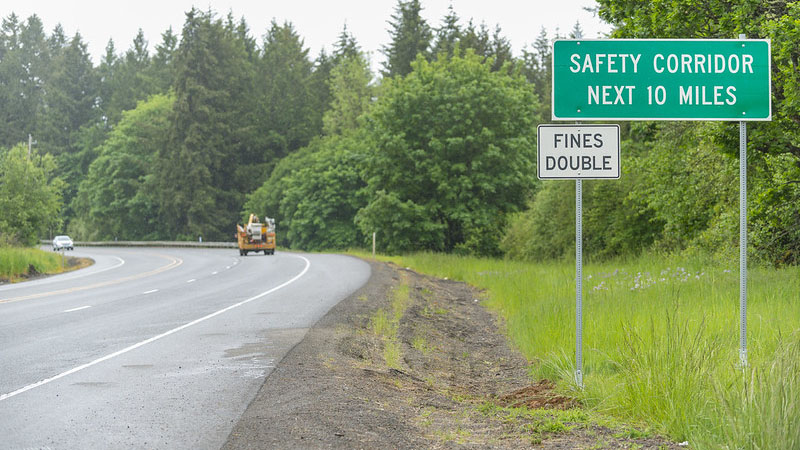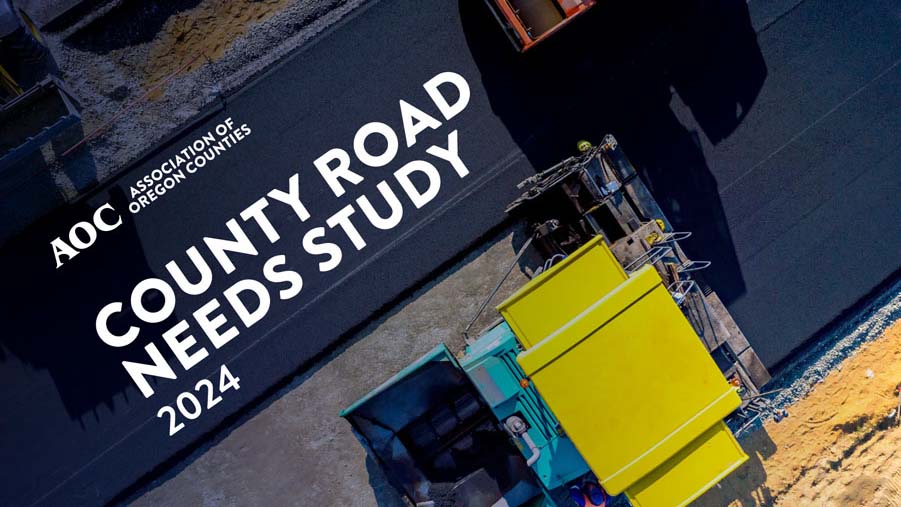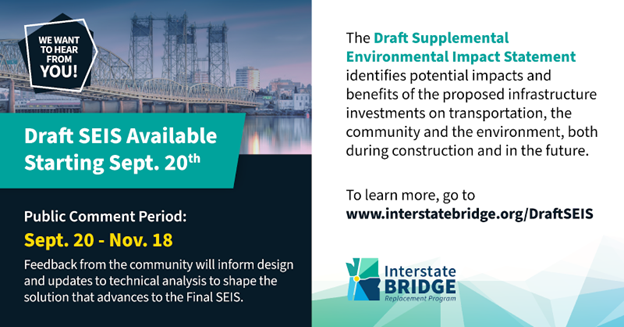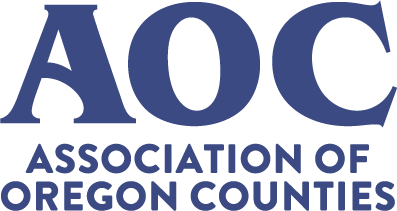
Apr 30, 2025 | AOC Advocacy, AOC News, Transportation
The Co-Chairs of the Joint Committee on Transportation recently released a framework for the 2025 Transportation ReInvestment Package (TRIP). New revenue proposed in the framework equates to a 70% increase in statewide county road department funding over current projections. According to the 2024 County Road Needs Study, counties statewide face a $834 million/year funding shortfall – the TRIP framework makes significant progress toward filling that gap.
The TRIP framework aligns with the Association of Oregon Counties (AOC) Legislative Committee’s transportation priority by maintaining the 30% county share and modernizing State Highway Fund (SHF) revenue mechanisms. The framework also directs 90% of all new revenue to safety, maintenance, and preservation across the shared transportation system.
“Advocacy from counties will be critical to maintaining these proposed investments and the county 30% share of the SHF in the final package,” urged Legislative Affairs Director Mallorie Roberts.
While bill language is expected to be released by early May, with public hearings in the Joint Committee on Transportation to follow, negotiations among legislators are already underway. AOC has prepared talking points (linked below) based on AOC’s transportation package priority and principles which can be used as a starting point to engage with the Legislature and the media.
AOC appreciates your advocacy and engagement in this top priority issue for AOC and counties. Please copy AOC Legislative Affairs Director Mallorie Roberts on emails to legislators, and if you have any questions please don’t hesitate to reach out.
Resources

Mar 25, 2025 | OACES, Transportation
The Association of Oregon Counties (AOC) and the Oregon Association of County Engineers and Surveyors (OACES) worked with the Legislature to pass House Bill 2154, making the County Safety Corridor Program permanent.
The top priority of every county road department is ensuring Oregonians can get to where they are going safely on our roads. Rural county roadways face significant safety challenges from limited cell phone reception, longer emergency response times, simpler roadway infrastructure, and risky driver behaviors. County roads suffered 719 fatal and serious injury crashes in 2022. While small-scale crashes are concentrated in urban areas, rural county roads see 74% of county road fatalities, and when vehicle crashes occur there, the risk of fatalities is significantly higher than on urban roadways.
In 2019, House Bill 3213 established the County Safety Corridor Advisory Group and launched the Safety Corridor Pilot Program to design and test safety corridors aimed at improving rural traffic safety. Safety corridors are short stretches of road that pair doubled fines, engineered safety improvements, education and outreach strategies, and increased enforcement on a county road with a history of fatal or serious crashes.
County road officials, county sheriffs, emergency response officials, the Oregon Department of Transportation, and AOC came together to develop the pilot program and recruit counties to put this idea into practice.
Two safety corridors were launched by the pilot program, with Lane County and Marion County taking the lead on this traffic safety intervention. With Marion County’s emphasis on engineering improvements and Lane County’s emphasis on public education campaigns, both models proved to be highly successful.
Fatal and serious injury crashes were severely reduced along both county safety corridors. These successes are all the more impressive when compared to state wide crash data, which showed increases in fatal and serious injury crashes across the transportation system during the same timeframe.
The pilot program demonstrated that doubled traffic fines, in conjunction with road signs, outreach, and enforcement, led to short-term successes on two stretches of county roadway that had a high incidence of fatal and serious injury crashes.
We are excited that this lifesaving and practical tool will now be available to all Oregon counties as a standing fixture in state law.
Contributed by: Jordan Cole | Policy Analyst
Photo credit: New safety corridor in place by ODOT/ CC by 2.0.

Oct 30, 2024 | AOC Advocacy, Transportation
Until the passage of Senate Bill 1566 during the 2024 short session, Oregon law prohibited counties from charging fees for permits issued to water, gas, electric, and communications utilities for construction, repair, or maintenance work in the county right of way. The statutory preemption on permit fees meant that precious State Highway Fund dollars intended for county road improvements and maintenance were instead subsidizing public and private utility operations.
SB 1566 removed the preemption and allows counties to charge cost-recovery fees for permits issued to the utilities that could previously operate in the county right of way free of charge. This month, Multnomah County became the first to pass an ordinance to implement the bill and begin to recover the costs incurred by utility permit review and administration.
Multnomah County’s ordinance updates Multnomah County Code Chapter 29 Building Regulations to include a code section § 29.503(E) which states that the Director can set fees consistent with SB 1566 (2024). While this is a small change to the code, it effectively removes the preemption against charging utilities. Now that the preemption is removed Multnomah County can apply the fee structure it already has in place. SB 1566 allows Counties to charge on Jan. 1, 2025. However, Multnomah County plans to begin charging permit fees on July 1, 2025. Between now and then the Transportation Development program (which is responsible for permitting) will be updating their permit forms, doing some outreach to the utility companies and their contractors, and updating the online permit portal to make it easier for utility companies and their contractors to both apply and pay the fee.
Negotiated language in SB 1566 includes a fee cap, permit fee exemptions for vegetation management, routine maintenance, and emergencies, and requires that completed fee-eligible permits must be approved or denied by the county within 15 business days. SB 1566 sunsets in 2031, so the legislature will have to review and renew the authority it provides to counties in a future session.
SB 1566 contains language that allows a county to begin ordinance development now, with operative date no earlier than Jan. 1, 2025. The Association of Oregon Counties (AOC) encourages county boards of commissioners and county courts to work with county road departments and county counsels, and consider adopting an ordinance.
Submitted by: Mallorie Roberts | Legislative Affairs Director

Sep 25, 2024 | AOC Advocacy, AOC News, Transportation
2024 County Road Needs Study Forecasts $834 Million Annual Revenue Shortfall Statewide for County Roads
Salem, Ore. — Today, the Association of Oregon Counties (AOC) presented its 2024 County Road Needs Study to the Legislative Joint Committee on Transportation, forecasting a statewide annual revenue shortfall of 59 percent over the next five years, resulting in an additional $834 million per year needed to maintain and manage the county road system in a safe and adequate condition.
“The objective of our 2024 study was to determine and demonstrate the funding required to support the county road system to meet the needs of the traveling public over the next five years,” stated AOC County Road Program Director Brian Worley, who presented the report to the lawmakers. “The report concludes that anticipated revenue will not meet even the basic road maintenance and safety needs for most counties. Over the next five years, counties anticipate a 60 percent shortfall for pavement preservation projects and a 70 percent shortfall for capital construction.”
Oregon counties are facing structural funding challenges that impact core services, including maintenance of roads and bridges.
Counties are responsible for the largest share of Oregon’s road system, with 26,744 miles under county jurisdiction, including 3,448 bridges over 20 feet in length.
“Most of the county system was constructed over a half of a century ago, and for the last four decades, county road departments have been prioritizing the maintenance, preservation, and safety of those roads,” said Worley. “However, all counties are seeing dramatic decreases in funding, and the consequences of inadequate funding are unsafe and unreliable bridges and roads.”
As noted in the study, the majority of revenue for county roads come from the State Highway Fund, which comprises 47 percent of incoming revenues on average. For some counties, especially rural areas, operations and maintenance budgets are comprised solely from state support.
“We urge legislators to consider this study in developing a transportation funding package in the 2025 session, and to uphold the 50-30-20 funding formula that supports the full transportation system through shared State Highway Fund revenues,” said Mallorie Roberts, AOC legislative affairs director, “AOC and counties will continue to partner with the state in 2025 to ensure growth and stabilization of the State Highway Fund with diverse and modernized funding mechanisms.”
The current study is an update of AOC’s 2014 study that reported the anticipated needs of road departments from 2014 to 2018. The 2024 study looks at the same road construction and maintenance activities anticipated by individual county road departments.
To read the full 2024 study, and learn more about county road, bridge, and transportation priorities and funding visit oregoncounties.org.
###
About AOC
The Association of Oregon Counties (AOC) unites Oregon’s county governments. Founded in 1906, AOC brings county officials together to advocate with a collective voice on statewide and national policy, exchange ideas, build new leadership skills, and exercise exemplary leadership in public service, while enriching the public’s understanding of county government.

Sep 24, 2024 | Events, Transportation
The Interstate Bridge Replacement (IBR) program is a bi-state effort between Oregon and Washington to replace the aging Interstate Bridge with a safer, earthquake resilient multimodal corridor. It will reconstruct seven interchanges in Portland and Vancouver, create thousands of jobs, improve mobility along the interstate, and provide a new light rail link between Portland Vancouver.
The program published its Draft Supplemental Environmental Impact Statement (SEIS) on Sept. 20, 2024, kicking off a 60-day public comment process under the National Environmental Protection Act (NEPA) that will run through Nov.18, 2024.
Program Administrator Greg Johnson will be joining the Association of Counties (AOC) and League of Oregon Cities (LOC) on Oct. 25, from 12 p.m. to 1:30 p.m. for a virtual presentation to talk about the IBR program, highlight the key findings of the Draft SEIS, and outline how to participate in the public comment process.
Join the webinar here. (New link)
Contributed by: Mallorie Roberts | Legislative Affairs Director

Sep 1, 2024 | Transportation
The Joint Committee on Transportation (JCT) is holding a listening tour in preparation for the consideration of a new transportation funding package during the 2025 legislative session. Listening tour stops are expected to include roundtable discussions with local leaders, a site tour, and a public hearing.
The Association of Oregon Counties (AOC) encourages our members to save the date for their area meeting and be prepared to participate on behalf of their county’s local road, bridge, and transportation needs and priorities.
County road project tours and roundtables: The 11:30 a.m. to 1:30 p.m. local operations, maintenance, and safety project tours are coordinated by ODOT Region Managers. If your county is a host location please contact your ODOT Region for more information and to coordinate tour stops to visit county projects or facilities that would convey county road needs to the legislature. AOC county members wanting to attend the 2 to 4 p.m. local roundtable should contact AOC Legislative Affairs Director Mallorie Roberts before the meeting.
The AOC County Road Program and the Oregon Association of County Engineers and Surveyors (OACES) will provide additional suggested talking points, statewide county road needs data, and individual county road priorities one-pagers, to help your county communicate its needs effectively with the legislature.
County Roads Resources:
Legislative and ODOT Resources:
Transportation Safety and Sustainability Outreach Tour Schedule
| Date | City | Location | Link to OLIS meeting pages |
| 6/4 | Portland | Portland Community College: Cascade Campus | Meeting Link |
| 6/18 | Tillamook | Port of Tillamook Bay, Officer’s Mess Hall | Meeting Link |
| 7/16 | Albany | Tripp Theater, Takena Hall, Linn-Benton Community College | Meeting Link |
| 7/17 | Eugene | Lane Events Center | Meeting Link |
| 8/7 | Coos Bay | Marshfield High School | Meeting Link |
| 8/8 | Medford | Jackson County Expo Center, Mace Building | Meeting Link |
| 8/28 | Ontario | Treasure Valley Community College Four Rivers Cultural Center, Meyer McLean Memorial Theater | Meeting Link |
| 8/29 | Hermiston | Eastern Oregon Trade and Event Center, Great Room | Meeting Link |
| 9/12 | Bend | OSU Cascades Campus, Ray Hall | Meeting Link |
| 9/13 | The Dalles | The Dalles Middle School Commons | Meeting Link |
| 9/25 | Salem | Virtual | Meeting Link |
| 9/26 | Happy Valley | TBA | Meeting Link |
| 9/27 | Hillsboro | TBA | Meeting Link |
Page updated Sept. 3, 2024






